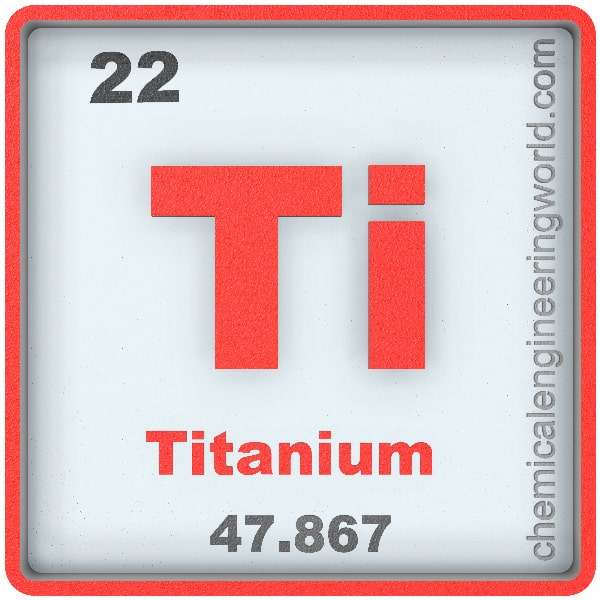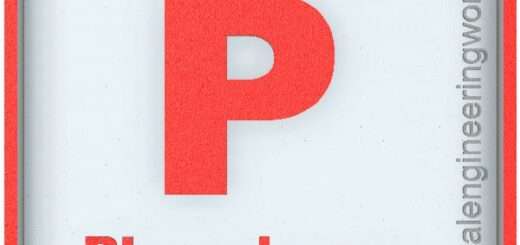Titanium Element Properties and Information

Titanium Element Properties and Information
Titanium is the twenty-second element on the periodic table. Elements are arranged in the periodic table on the basis of the atomic number. Atomic number is the number of protons in the nucleus of the atom. Titanium has an atomic number of 22. It is located in the Group 4 and Period 4 of the periodic table of elements. It is denoted by Ti. The name is derived from ‘Titans’ who are the sons of the Earth goddess of Greek mythology.
William Gregor is credited with the discovery of titanium. He analysed menachanite mineral in 1791 and reported that it contained an oxide of iron and an unknown metal. In 1795, Martin Heinrich Klaproth investigated a form of rutile mineral and found that it contained the same unknown metal. He named it titanium, though he was not able to obtain it in pure form. Titanium was obtained in pure form in 1910 by M.A. Hunter by heating titanium chloride and sodium metal.
Titanium is ninth most abundant element on Earth. It is primarily found in igneous and sedimentary rocks. Some of the minerals in which titanium is present are; rutile, ilmenite, sphene. It is found in many iron ores.
Physical Properties
- Titanium is a hard and strong metal which shines with a lustrous silver colour.
- The atomic mass of titanium is 47.9
- The melting point of titanium is 1660°C
- The boiling point of titanium is 3287°C
- The density of titanium is 4510 in S.I. units at 20°C
- Titanium is known for its high strength to weight ratio.
- Titanium has low thermal and electrical conductivity when compared to other metals.
- Titanium acts as a super conductor when it is cooled below 0.49 K.
- Titanium is not magnetic in nature.
Chemical Properties
- Titanium metal oxidises immediately upon exposure to air and forms a layer on the surface.
- Titanium withstands attack by dilute sulfuric acid, hydrochloric acid and many organic acids but it gets corroded by concentrated acids.
- Titanium reacts with pure nitrogen at 800°C to form titanium nitride.
Methods of Production
- Fabrication: The titanium ore is first reduced into a porous form called the sponge then the sponge is melted to form ingot. The ingot is then converted to plates, tubes, rods, powders, etc.
- Kroll process: The core of the process is that the titanium chloride is reduced with magnesium metal. First, the titanium dioxide is subjected to carbothermic reduction in the presence of chlorine. The chlorine gas is passed over to rutile or ilmenite in the presence of carbon. Extensive fractional distillation is done to obtain titanium chloride. It is reacted with molten magnesium at 800°C in an argon atmosphere to obtain titanium metal.
- Armstrong process: Gaseous titanium chloride is mixed and reacted with molten sodium metal which forms sodium chloride salts and titanium metal. The titanium is then filtered from the sodium and the sodium chloride salts are removed by water washing.
Relevance in Chemical and Related Industries
- Metallurgy: Titanium is used in stainless steel to reduce the carbon content. It also reduces the grain size of the steel. Many metals such as vanadium, copper, iron, manganese, molybdenum, etc are often alloyed with titanium.
- Pigment: About 95% of the process ore are used to produce titanium oxide which is a intense white permanent pigment. It finds its use in paints, toothpastes, papers, plastics, gemstones, etc.
Relevance in Other Industries
- Structures: Titanium alloys have quite high strength to density ratio, high corrosion resistance, fatigue resistance, withstand high temperatures, don’t creep, hence they are used as structures in many aircraft, space crafts, navel ships and missiles.
- Jewelry: Titanium is quite durable and inert. It is often mixed with gold in order to reduce the hardness and increase the durability of the gold product. Addition of just 1% titanium to a 24-karat gold produces a product whose hardness is similar to 14-karat gold and durability is more than pure 24-karat gold.
- Medical: Since titanium is non-toxic and biocompatible with the body, it is used as implants for hip balls and sockets. Titanium and its alloys are often used as dental implants because they are quite durable, they can stay in place for more than two decades.
Health Effects on Exposure
Overexposure: If titanium powder is inhaled in large amounts then it causes pain in chest, coughing and difficulty in breathing.
Effects on Surroundings
- Explosion: The titanium powder can result in a fire hazard or an explosion if not handled properly.
References:
































